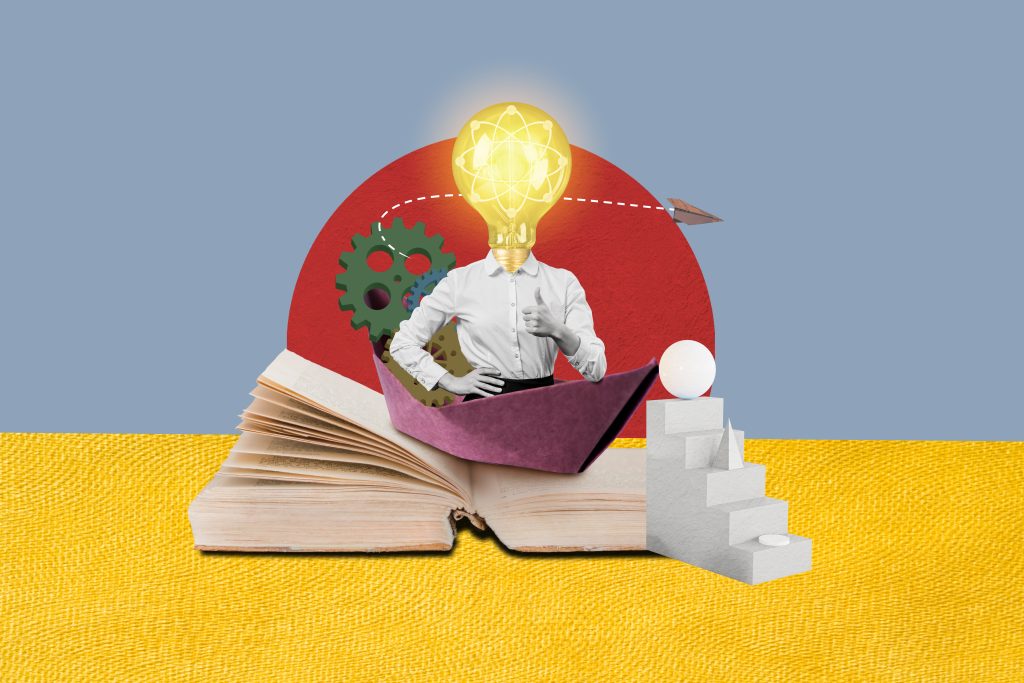How to Let New Inputs Rearrange Old Knowledge
Aiden Foster July 25, 2025
In the age of information, we are constantly exposed to new ideas, technologies, and perspectives that challenge the way we view the world. While it’s essential to absorb new knowledge, how we process and integrate it into our existing understanding is just as crucial. The ability to let new inputs rearrange old knowledge is an often overlooked skill in the pursuit of true learning. In this article, we explore the emerging trend of cognitive flexibility—the ability to restructure your mental framework in response to new information—and how you can harness this skill to accelerate personal and professional growth.

The Role of Cognitive Flexibility in Learning
The term “cognitive flexibility” refers to the mental ability to switch between thinking about two different concepts, or to think about multiple concepts simultaneously. It’s about adapting your thinking in response to new inputs and experiences, which allows you to reorganize your existing knowledge to fit new information. But this is more than just changing your mind—it’s a complex process that requires an openness to new ideas, the ability to recognize outdated or inefficient knowledge, and the skill to integrate new facts into a coherent mental model.
Cognitive flexibility is one of the key skills that cognitive scientists and educators are focusing on to improve both learning and adaptability in today’s rapidly evolving world. In fact, research shows that cognitive flexibility plays a significant role in problem-solving, creativity, and decision-making. Whether you’re adapting to new workplace technology, exploring a new subject, or reevaluating long-held beliefs, cognitive flexibility allows you to adjust your thought processes and grow intellectually.
Why Rearranging Old Knowledge Matters
As we gather more information, our brains must process and store it in ways that make sense. But here’s the catch: the mind tends to gravitate toward maintaining existing mental structures, especially when the new information contradicts or challenges those structures. This is called cognitive inertia—the resistance to changing existing knowledge frameworks. However, rearranging old knowledge—by updating outdated models with new inputs—leads to better understanding and improved problem-solving.
In many fields, from science and technology to business and education, the ability to rearrange old knowledge is crucial. The challenge lies not only in learning something new but in adjusting the mental models we’ve built over time. This process ensures that what we know remains relevant and applicable.
The Neuroscience Behind Learning and Knowledge Reorganization
Neuroscientific research has shed light on how our brains integrate new information. Studies show that the process of neuroplasticity—the brain’s ability to reorganize itself by forming new neural connections—underpins the idea of rearranging old knowledge. When we encounter new data that challenges our existing knowledge, our brain doesn’t just store the new information as separate or isolated; it connects this information to the neural pathways associated with previous knowledge, forming a richer and more adaptable understanding.
- Example: A neuroscientific study by K. O’Reilly and colleagues (2013) showed that learning, especially in response to changing environments, requires the brain to adjust its existing neural circuits to accommodate new information. This neuroplasticity makes it possible for us to update our knowledge continuously.
This neuroplastic capacity is the foundation for lifelong learning. Without it, we would be stuck in old paradigms, unable to adjust our thinking in response to new developments.
How to Let New Inputs Rearrange Old Knowledge: Practical Strategies
The real question is, how can you consciously engage in this process of cognitive flexibility? Below are several practical strategies for allowing new inputs to reshape old knowledge, making you a more effective learner and thinker:
1. Challenge Your Assumptions
One of the most important aspects of cognitive flexibility is the ability to challenge assumptions and preconceived notions. Every time you learn something new, ask yourself how it fits with what you already know. Does it confirm your beliefs, or does it challenge them? If it challenges your knowledge, how can you adjust your thinking to accommodate it?
- Actionable Tip: Make it a habit to actively question your mental models. For example, if you’re learning a new theory or concept, take some time to compare it with existing theories. Are there similarities or differences? What might the new theory imply about your previous understanding?
2. Stay Open to Feedback and New Perspectives
Feedback is an essential part of learning, and it’s often the catalyst for reorganizing knowledge. Whether it’s feedback from a colleague, mentor, or even self-reflection, constructive feedback helps you see where your knowledge may need adjusting.
- Actionable Tip: Embrace feedback as a tool for growth. Ask for diverse perspectives from people who have different expertise and experiences. This can broaden your understanding and help you see gaps or contradictions in your knowledge.
3. Use Analogies and Metaphors
Analogies and metaphors are powerful tools that can help you connect new knowledge with what you already know. By drawing parallels between familiar concepts and new ideas, you allow your brain to adjust existing frameworks to incorporate new data more easily.
- Actionable Tip: When learning something new, try to create analogies to concepts you already understand. This helps integrate new knowledge into your existing mental models, making it easier to recall and apply.
4. Apply the “Feynman Technique”
The Feynman Technique is a powerful method of learning that involves explaining a concept in simple terms, as if you were teaching it to someone with no prior knowledge of the subject. This method forces you to clarify your understanding and identify gaps in your knowledge, which in turn facilitates the reorganization of old and new information.
- Actionable Tip: After learning something new, explain it to a friend, a colleague, or even yourself in simple language. Use this process to identify areas that need further exploration or clarification.
5. Reflect and Revisit Past Learning
To reorganize old knowledge, it’s important to revisit it periodically. Reflect on the lessons and concepts you’ve already learned and compare them with what you’ve learned recently. This helps you understand how your knowledge has evolved and how new insights can alter or improve your mental models.
- Actionable Tip: Schedule time each week or month to reflect on the knowledge you’ve gained and consider how it fits with previous learning. This time for reflection is essential for cognitive flexibility and growth.
6. Engage in Cross-Disciplinary Learning
One of the best ways to stimulate cognitive flexibility is to step outside your comfort zone and engage with knowledge from different fields. Cross-disciplinary learning can help you see how new information might fit into your existing framework and open up new ways of thinking about problems.
- Actionable Tip: Explore topics and fields outside of your immediate area of expertise. Read books, attend talks, or take online courses in areas unrelated to your usual focus. The more diverse your learning, the more flexible your cognitive patterns will become.
Real-World Applications: Why Rearranging Knowledge Matters
Let’s consider how the ability to rearrange knowledge plays out in real-world scenarios. From tech startups to healthcare, the need for cognitive flexibility is growing as industries evolve and new challenges arise.
1. Technology and Innovation
In the tech industry, new inputs such as algorithms, data science principles, and machine learning models frequently force developers and engineers to rethink long-standing paradigms. An ability to rearrange old knowledge quickly is key to staying ahead in a competitive, fast-moving industry.
- Example: A software developer working on a new artificial intelligence (AI) project might need to reshape their understanding of how neural networks work in light of new research or developments. Those who can adapt their mental models of machine learning will build more innovative and efficient systems.
2. Healthcare and Medicine
In medicine, new research findings often challenge established treatment protocols. The COVID-19 pandemic, for instance, forced healthcare professionals to rethink their understanding of epidemiology, patient care, and treatment strategies. Those who were able to integrate new information into their existing knowledge quickly were better equipped to handle the crisis.
- Example: Researchers studying new vaccines needed to integrate cutting-edge immunology with pre-existing knowledge of virus behavior and human biology. Cognitive flexibility played a critical role in this integration process.
3. Business Strategy
In business, adaptability is key. A successful entrepreneur or leader doesn’t just rely on past successes—they continually adjust their strategies based on new market data, customer feedback, and technological advancements. Being able to rearrange old knowledge is essential to creating a resilient and innovative business.
- Example: A CEO facing a market shift due to new technology must quickly analyze the impact and adjust their business model. This requires both cognitive flexibility and the ability to integrate old strategies with new inputs.
Conclusion
In our rapidly changing world, the ability to let new inputs rearrange old knowledge is not just a valuable skill—it’s essential. Whether you’re learning a new subject, adopting new technologies, or solving complex problems, cognitive flexibility allows you to evolve with new information. By embracing methods that encourage reflection, feedback, and cross-disciplinary learning, you can make your mind more adaptable, creative, and resilient.
So, start today—challenge your assumptions, revisit your past learning, and make room for new ideas. By doing so, you’ll not only enhance your ability to absorb new knowledge but also grow your capacity to apply it in innovative and meaningful ways.
Reference
- APA – Cognitive Flexibility: Explains the concept and its role in adaptability and learning, https://en.wikipedia.org
- Scott Barry Kaufman – Ungifted: Intelligence Redefined challenges rigid notions of intelligence and supports adaptive thinking, https://scottbarrykaufman.com
- David Epstein – Range: Why Generalists Triumph in a Specialized World: Argues for flexibility and broad thinking over early specialization, https://en.wikipedia.org








